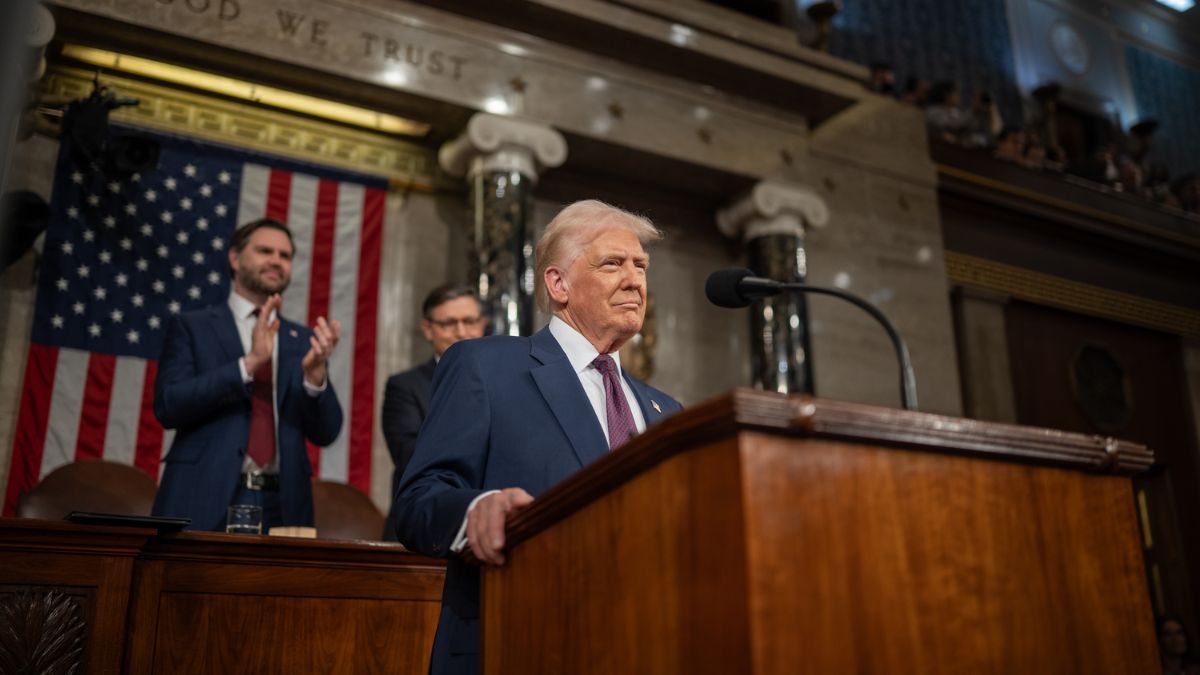US President Donald Trump criticised the high tariffs charged by India and other countries, terming them as “very unfair” and announced reciprocal tariffs from April 2 on nations that impose levies on American goods.
Trump made these remarks in an address to the Joint Session of the Congress on Tuesday. It was the first address of his second term in the White House. On January 20, Trump was sworn in as the 47th President of the US.
“If you don’t make your product in America, however, under the Trump administration, you will pay a tariff and in some cases, a rather large one," Trump said.
“Other countries have used tariffs against us for decades and now it’s our turn to start using them against those other countries. On average, the European Union, China, Brazil, India, Mexico and Canada — have you heard of them? And countless other nations charge us tremendously higher tariffs than we charge them,” Trump said.
With weeks until Trump’s proposed retaliatory tariffs, commerce minister Piyush Goyal embarked on a trip to the United States on Monday to conduct trade negotiations with his US counterpart Howard Lutnick, Reuters reported.
Impact Shorts
More ShortsIn February, President Trump said that his administration would “soon” impose reciprocal tariffs on countries such as India and China, reiterating what he had said during Prime Minister Narendra Modi’s visit to the US capital last month.
Trump has made it clear to Prime Minister Modi that India would not be exempt from Washington’s reciprocal tariffs, stating that “nobody can argue with me” over tariff structure.
Trump asserted that this system is “not fair to the United States” and never has been, and that reciprocal tariffs would go into effect on April 2.
Trump is implementing a 25 per cent additional tariff on imports from Canada and Mexico and a 10 per cent additional tariff on imports from China. In a retaliatory action, Canada said that effective March 4, 2025, it is imposing 25 per cent tariffs on $30 billion in goods imported from the United States.
In the past, Trump has called India “tariff king" and a “big abuser”.
During Prime Minister Narendra Modi’s visit to the U.S. last month, both nations agreed to work on the first segment of a trade deal by the fall of 2025, aiming for bilateral trade worth $500 billion by 2030.
During his visit, Goyal would seek clarity on US reciprocal tariffs to assess their impact on India, according to a government source. He may also explore potential Indian concessions and a trade agreement to lower tariffs and promote bilateral trade.
India is willing to consider tariff reduction on industrial items such as vehicles and chemicals, but it is resisting calls to decrease tariffs on agricultural products, citing the impact on millions of impoverished farmers, according to Reuters sources.
To calm trade tensions, India has already reduced duties on a number of commodities, including high-end motorbikes from 50% to 30% and bourbon whisky from 150% to 100%, while pledging to examine other tariffs, increase energy imports, and purchase more defence equipment.
India is vulnerable to Trump’s previously declared 25% tax on all steel and aluminium imports, which might lead to cheaper steel being dumped in India by other nations.
According to US estimates, overall goods trade with India was valued at approximately $129.2 billion in 2024.
US goods exports to India in 2024 totalled $41.8 billion, up 3.4% ($1.4 billion) from 2023. US goods imports from India reached $87.4 billion in 2024, up 4.5% ($3.7 billion) from 2023. The US goods trade deficit with India was $45.7 billion in 2024, up 5.4% ($2.4 billion) from 2023.


)

)
)
)
)
)
)
)
)



